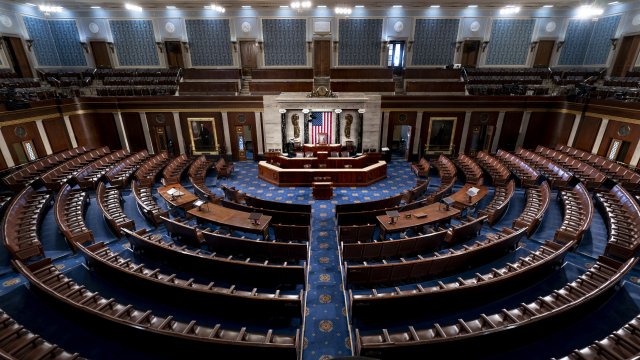In a place where members are accusing each other of throwing elbows, the word "bipartisan" might not spring to mind. But Americans wish it would, and some lawmakers think the appetite for change is higher than ever.
Rep. Derek Kilmer has been in Congress for more than a decade representing Washington state. And for four years, he led the House Select Committee on the Modernization of Congress, which included looking at ways to improve bipartisanship.
"We took testimony from members who said, you know, 'I showed up for freshman orientation. And literally it said, "Democrats you get on this bus; Republicans, you get on that bus."' And so we are polarized, almost systemically from the beginning," said Kilmer.
Poll after poll has found Americans want lawmakers to work together, but changing the culture in the Capitol is hard.
"There's an understanding that the status quo is not acceptable, that people don't want to be in an institution that A) doesn't get much done and B) you know, that according to recent polling is less popular than head lice, a colonoscopy and the rock band Nickelback," said Kilmer.
Another part of the problem is the expectations around reelection. Kilmer said members are afraid of being challenged in a primary, so lawmakers keep inching toward the extreme and then members raise money off of that extreme rhetoric. "Being a pragmatic problem-solving centrist is not a proven ratings grabber," said Kilmer.
SEE MORE: Biden signs temporary spending bill averting government shutdown
Margaret Spellings was the secretary of education under President George W. Bush and now leads the Bipartisan Policy Center. She thinks Congress would benefit from getting back to regular order.
"We've gotten away from kind of the regular structures of the Congress, where committees hear major pieces of legislation, there's an amendments process, there's testimony, you kind of grind through all of that at the committee level and then at the House," said Spellings.
Laws passed in a bipartisan way have more durability. Those bills receive more scrutiny as they're debated and then they're less likely to be overturned when the majority changes parties.
"Bipartisanship really makes for the best policymaking that can provide kind of what we have in common and a steady-as-she-goes approach to solving our nation's biggest challenges," Spellings explained.
Finding a place for that exchange of ideas is part of the problem. There's no communal workspace on Capitol Hill where members and staff from opposing parties can come together — something the Modernization Committee recommended changing.
Other simple changes could help, too, like intermixing Democrats and Republicans during hearings. Kilmer's committee showed that simple adjustment can boost conversation across the aisle.
"It fundamentally changed from this sort of Hatfields and McCoys on top of a dais dynamic to one that was engaging on problem solving. We need to do more of that within the institution of Congress," said Kilmer.
Some bipartisan work is happening in Congress, even if it doesn't always make the headlines. But bipartisan efforts tackling the country's biggest issues, like immigration and government debt, have remained elusive. Kilmer and Spellings say seeing success on issues like that will take leadership willing to stand up for bipartisanship and compromise.
Trending stories at Scrippsnews.com




